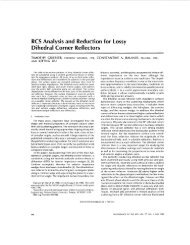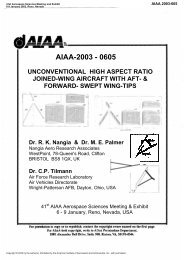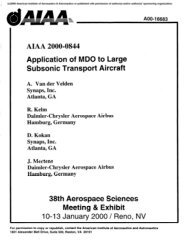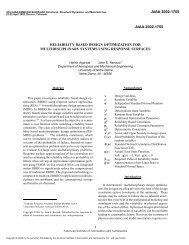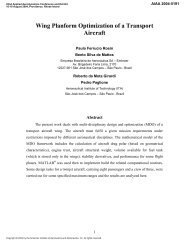The design report
The design report
The design report
You also want an ePaper? Increase the reach of your titles
YUMPU automatically turns print PDFs into web optimized ePapers that Google loves.
Landing gear fabrication 5.5<br />
<strong>The</strong> <strong>design</strong> layout of the landing gears was very basic in detail and the manufacture of<br />
them was taken into little consideration during the <strong>design</strong> stages. <strong>The</strong> fuselage was<br />
<strong>design</strong>ed in order to hold the 4 basic gears in place with the front gears being able to fit<br />
into the same compartment as their corresponding servo. <strong>The</strong> landing gears by<br />
themselves had not been thought out so during fabrication, many decisions had to be<br />
made. <strong>The</strong> gears had to be strong in tension and compression yet light enough to stick to<br />
weight estimations. Thus, steel rods which were easily available were opted for.<br />
Figure 5.5.01<br />
<strong>The</strong> bending of landing gears in order to hold the wheels were more complicated than<br />
expected. Since no special machinery was available and due to time constraints, it was<br />
decided that they would just be done by hand at the laboratory instead of seeking<br />
assistance at any local metal working store. This meant that the landing gears were not<br />
bent to an exact right angle. <strong>The</strong>y also did not have a clear and defined bend, but rather<br />
curved upwards to meet the required angle. This proved fatal later during ground tests<br />
and the fact the metal itself was not stable on tarred road but performed better on<br />
flatter concrete proved that the coefficient of friction between the two different surfaces<br />
made a significant difference on the forces experienced by the gears.<br />
<strong>The</strong> major improvement that was implemented into the <strong>design</strong> was a suspension<br />
system for the rear gears that was holding approximately 75% of the total load. This<br />
system is shown in figure 5.5.01 and 5.5.02. <strong>The</strong> suspension had to be limited to a 1cm<br />
spring due to its lack of earlier addition to the <strong>design</strong>. <strong>The</strong> fuselages were not <strong>design</strong>ed<br />
to allow for such a system and the bottom plate of the fuselages restricted the allowance<br />
for the suspension spring. <strong>The</strong> spring was placed between the gear holder placed in the<br />
fuselage above and a stopper below. Finding screws and stoppers also seemed a<br />
challenge at the time as hex key that was required to use some of the stoppers were not<br />
available. We overcame this by using a Philips screw driver to force out the hex screw<br />
on the stoppers.








![Introduction to RF Stealth [Book Review] - Antennas and ...](https://img.yumpu.com/16857890/1/190x245/introduction-to-rf-stealth-book-review-antennas-and-.jpg?quality=85)

